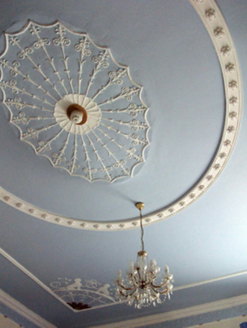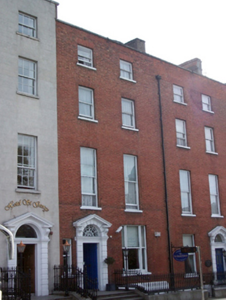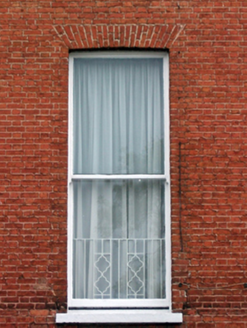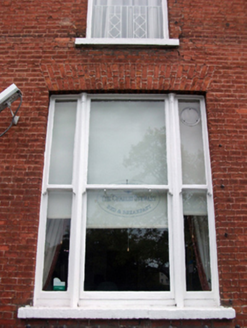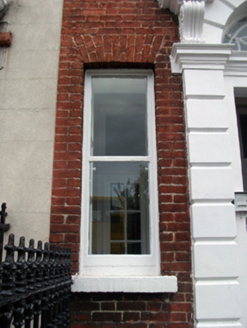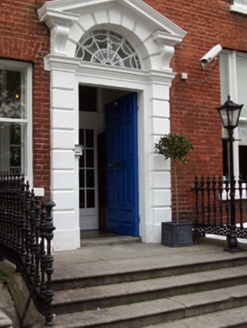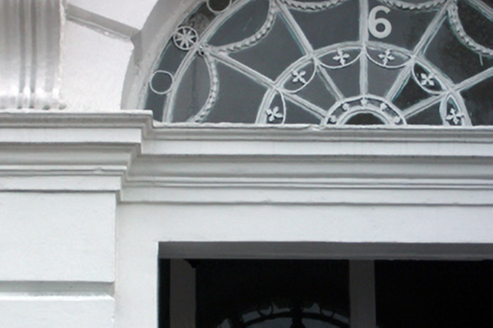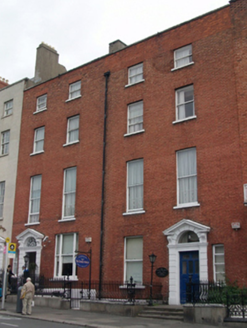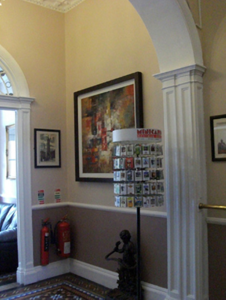Survey Data
Reg No
50011016
Rating
Regional
Categories of Special Interest
Architectural, Artistic
Original Use
House
In Use As
Guest house/b&b
Date
1750 - 1760
Coordinates
315755, 235106
Date Recorded
26/09/2011
Date Updated
--/--/--
Description
Terraced two-bay four-storey house over exposed basement, built c.1755, having recent two-storey red brick extension to rear. Now in use as guest house. Built as pair with No. 5. Pitched slate roof with clay ridge tiles behind rebuilt parapet wall with squared granite coping. Rendered chimneystacks with clay pots to party walls, shared with adjoining houses. Replacement uPVC rainwater goods throughout. Flemish bond red brick walls with lime pointing, granite plinth course and granite platband over rendered ruled-and-lined wall to basement level. Red brick elevation to rear. Camber-headed window openings with gauged red brick voussoirs, reveals and granite sills. Historic, c.1830, replacement one-over-one pane timber sliding sash windows to basement, first, second and third floors, and tripartite Wyatt window to ground floor. Cast-iron grilles to interior reveals of first storey openings. Additional one-over-one pane timber sliding sash window to north of doorcase. Round-headed door opening to painted stone doorcase comprising glazed timber panelled door with stone reveals flanked by rusticated pilasters on plinth blocks supporting fluted corbel brackets with open-bed pediment housing original cobweb fanlight, set within rusticated surrounds. Door opens onto granite flagged platform with cast-iron lamp post, two cast-iron bootscrapers and three nosed granite steps bridging basement area. Approach flanked by nineteenth-century wrought-iron railings on granite plinth with matching gate. Shared basement with No. 5 having Victorian tiles. Interior subdivided into hotel rooms and heavily altered. Geometric tile to entrance hall, c.1870, fanlight with timber tracery and heavy but simple modillion cornice. Doric pilaster reveals to archway of stair hall having curtail and ramped handrail. Half-landing retaining upper portion of former round-headed window with egg-and-dart cornice and large corbel bracket keystone with garland. First floor rear room having good neo-Classical ceiling with sphinxes to corners and simple urn and swag cornice.
Appraisal
This fine house with its pleasantly appointed façade forms an integral component of an historic streetscape. This site was leased in 1754 by Henry Darley, master mason to Dr Bartholomew Mosse. Along with its twin at No. 5, he built at least five houses along the east side of the Parnell Square and one on the west. It retains limited but quality neo-Classical interiors and a layout that, while altered, is still recognisable as a Georgian two-room plan. The addition of the small flanking window to the original early doorcase and a Wyatt window to the ground floor, contribute further architectural detail to the accomplished façade. The fine doorcase, with its fine cobweb fanlight, provides a decorative focus. The retention of timber sash windows contributes to the historic appearance of the building, and the setting is appropriate, with stone steps to the entrance, and the stone plinth and iron railings to the basement area. Parnell Square was the product of Dr Bartholomew Mosse. In 1748 he leased four acres at the junction of the three important sites: the Gardiner Estate, Sackville (now O’Connell) Street and Great Britain (now Parnell) Street. There the New Gardens (now the Garden of Remembrance) was constructed, a landscaped tract of land with illuminated paths, obelisks and a loggia.
